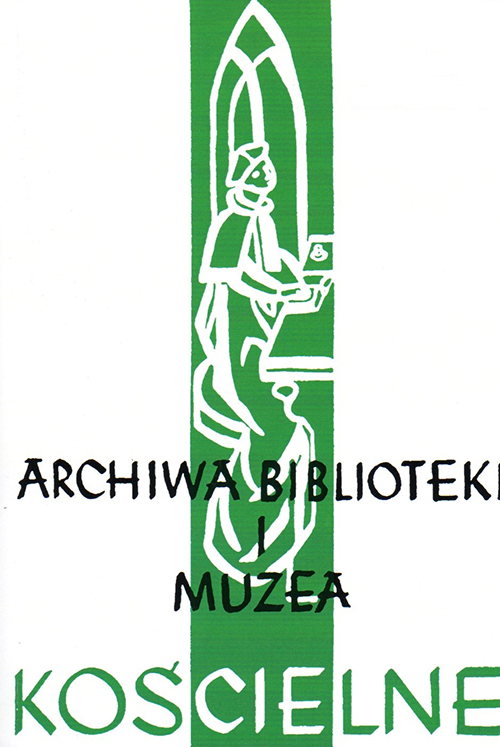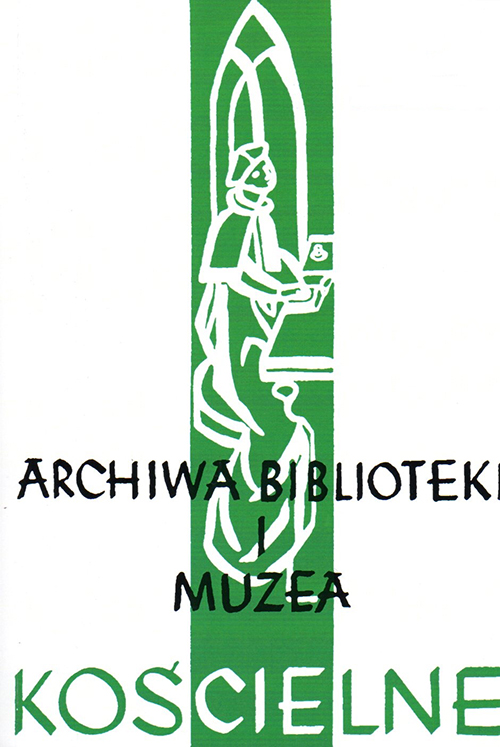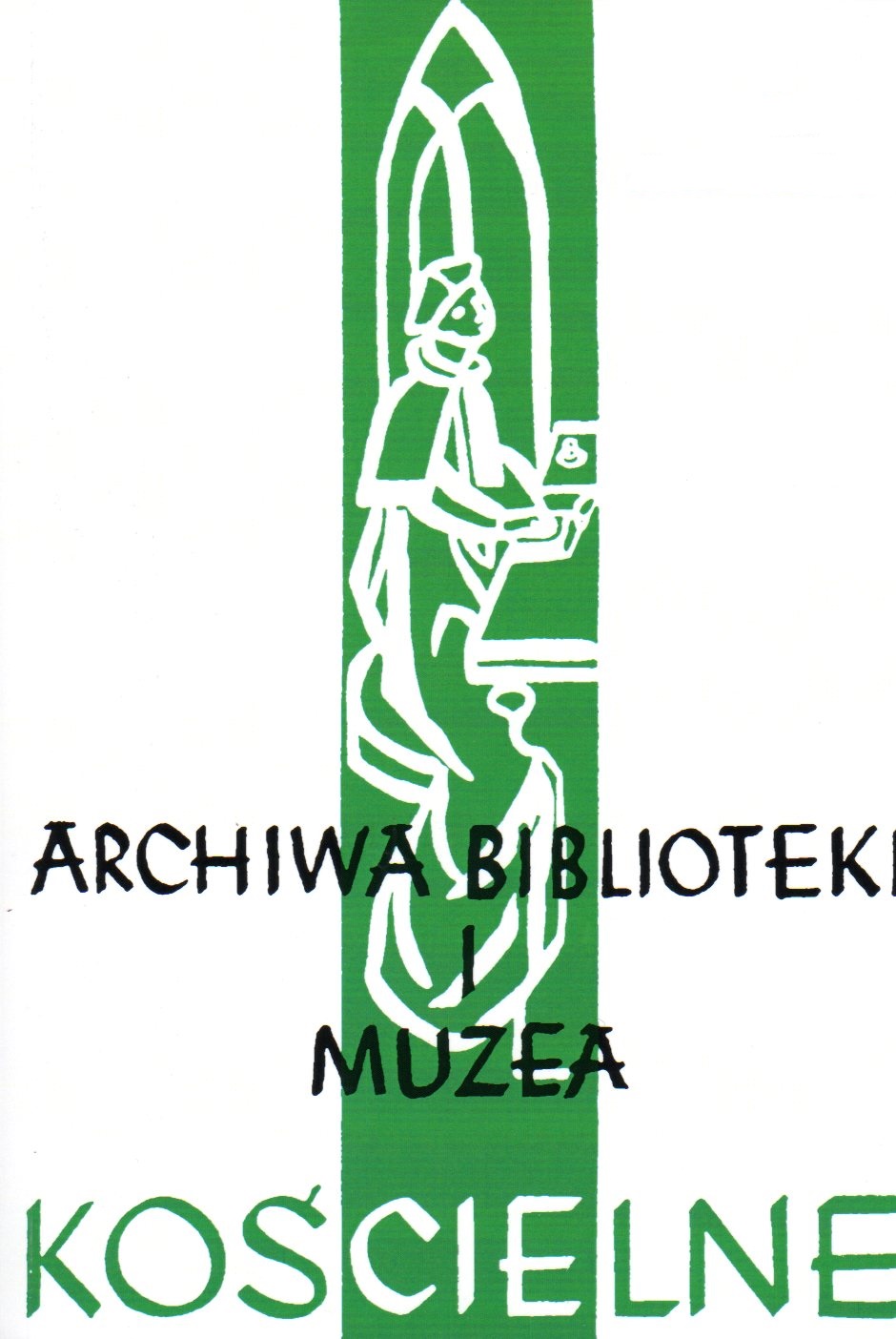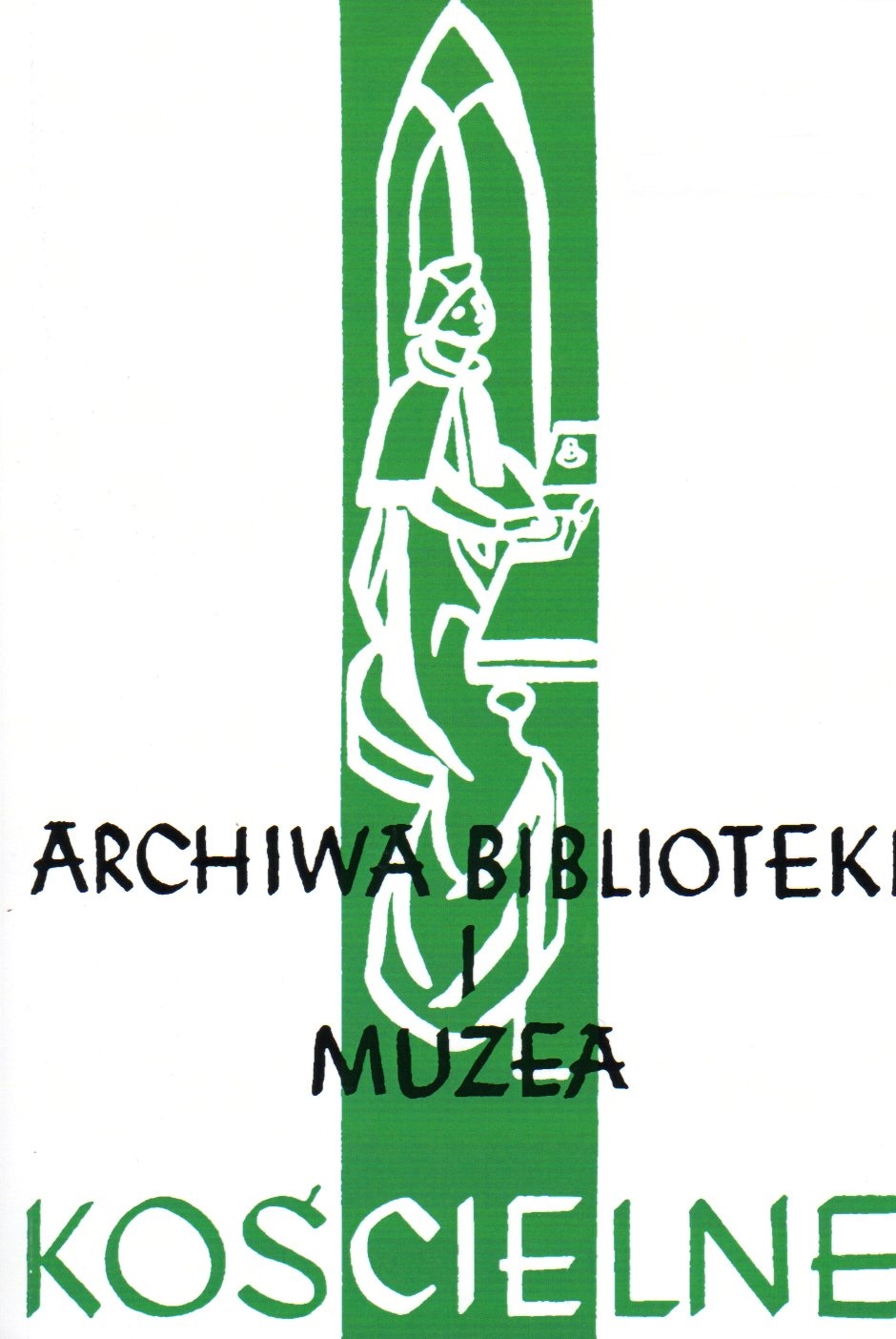Author(s): Tomasz Garwoliński / Language(s):
Issue: 102/2014
The collection of antique books of the sixteenth century of the Library of Hosianum, the Seminary of the Archdiocese of Warmia in Olsztyn includes 1559 publications. This is not a homogeneous collection, as the library collected vintage books from all over the Diocese of Warmia after World War II. Most publications come from Braniewo, Dobre Miasto, Barczewo and Frombork. They were released in 89 print centers, by 497 publishers. Most were written in Latin. Among the works in the Polish language, there are two copies of the Leopolite Bible, postils, sermons, religious literature and state publications.
In the sixteenth-century book collection of the Library "Hosianum" 25 publications are works of ancient writers. An essential part of the literature of that period was represented by religious works.
A Patristic period is represented by works of: Tertullian, Origen, St. Cyprian, St. Athanasius, St. Gregory of Nazianzus, St. Gregory of Nyssa, St. Ambrose, St. Jerome, St. John Chrysostom, St. Augustine, St Cyril of Alexandria, Theodoret of Cyrus, Cassiodorus, St. Gregory the Great, St. Isidore of Seville, St. Leo I the Great. The theology of the Middle Ages is represented by works of: St. Anselm of Canterbury, St. Bernard of Clairvaux, Peter Lombard, St. Albert the Great, St. Bonaventure, St. Thomas Aquinas, Nicholas of Lyra, St. Antoninus of Florence. There are the work of reformers: Erasmus of Rotterdam, Martin Luther, Philipp Melanchthon, John Calvin, John Bugenhagen, and counter reformers: St. John Fisher, John Eck, Peter Soto, Melchior Cano, St. Robert Bellarmine and Johannes Cochlaeusa.
Martin Luther is the most often represented author in the sixteenth-century book collection in the Library "Hosianum"(41 works). There are also plenty of books by the authors from the Society of Jesus: St. Peter Canisius, St. Francis Suarez and many others - more or less known. Sixteen works are written by Louis of Granada – a very popular Dominican mystic. In addition, there are works of eminent bishops of Warmia who held important church and state positions: John Dantiscus, Stanislaus Hosius, Marcin Kromer. The collection includes the works of native authors – priests of Warmia, canons and Jesuits working in Braniewo: John Benedict Solfa, Anthony Possevino, Thomas Treter, Fabian Kwadrantyn (Quadrantinus), Frederic Bartsch. There are also the poems of the first humanist poet, born in Warmia, Eustace Knobelsdorf.
In the collection we can also find the works of other famous Polish authors, such as: Andrzej Frycz Modrzewski, Mikołaj Rej, Jakub Górski, Rev. Piotr Skarga, Stanisław Reszka. The sixteenth-century book collection of the Library "Hosianum" contains many editions of the Bible (26), liturgical books (among them Missals and agendas of Warmia and the agenda of Cracow of 1517), martyrologies, sermons, codes of civil and canon law. There are the works of the poet Francis Petrarch, works on philosophy, rhetoric, history, literature, astronomy, biology,
More...




